THE ECB’s RATE REVERSAL:
A YEAR OF REALITY CHECKS
From aggressive hikes to the first cut
Starting in July 2022, the ECB began raising rates sharply — ten consecutive hikes — to tame inflation that had soared past 10% after the pandemic and energy shocks.
By September 2023, policy rates peaked at historical highs: refinancing at 4.5%, lending at 4.75%, and deposit at 4%.
June 2024: Breaking the trend
On 6 June 2024, the ECB cut all key rates by 0.25 percentage points—the first reduction since September 2019 — lowering the deposit rate to 3.75%.
Christine Lagarde framed this as a “hawkish cut”: not a pivot to easing, but a measured adjustment reflecting disinflation and economic fragility. Inflation was still sticky (2.6% in May), though trending downward, and economic growth remained subdued.
Continued trimming through year-end
After the June cut, the ECB signaled more looseness ahead. According to Statista, rates fell progressively from 4.5% in June to around 3.15% by December 2024.
Over the summer and autumn, the ECB implemented further quarter-point cuts in September, October, and December — eventually bringing the deposit rate down to 3%.
.

2025 easing push
The slide carried into early 2025:
- December 2024
Deposit rate at 3%, refinancing at 3.15%, marginal lending at 3.4%. - March 2025
Cut to deposit 2.5%, refinancing 2.65%, lending 2.9% — the sixth reduction since June 2024. - January 2025
Deposit lowered to 2.75% amid flat growth in Q4 2024.
The corresponding chart on the very top is showing the ECB’s main refinancing rate from June 2023 through March 2025. It captures the rate hikes into late 2023, followed by the progressive cuts beginning mid-2024.
What’s behind the moves?
- Disinflation
Headline inflation plunged from over 10 % to close to target levels (~2 %), but core and wage-driven price pressures remained stubbornly high. - Growth concerns
The eurozone struggled with stagnation — no GDP growth in late 2024, fragile consumer sentiment, and structural weakness in Germany and France. - Data-dependent policy
The ECB insisted on a meeting-by-meeting approach: keen not to loosen too early, yet acknowledging the equal risks of a faltering economy.
Where we stand & what’s next?
As of March 2025, deposit rates rest at 2.5%, the lowest in over a year.
Judging by the shift in tone — “rates no longer significantly suppress inflation” — the ECB seems closer to pausing the hiking cycle and potentially ending the current easing phase.
Going forward, every decision hinges on fresh inflation data, wage dynamics, and macroeconomic resilience — especially in light of significant global uncertainties.
Bottom line
The past year has seen a dramatic reversal: from panic‑driven tightening to cautious cuts across six ECB meetings. It’s not a full pivot to quantitative easing — but a pragmatic recalibration, balancing the ongoing battle against price pressures with the necessity of sustaining economic growth.
The ECB appears to be “taking its foot off the brake,” but not gasping for more horsepower until the data firmly supports it.
What do you think about the next development of the interest rate?
Contact us
Monday to Friday: 9:00 AM – 6:00 PM
or by prior arrangement
Saturday & Sunday: Closed
Phone: +49 (0) 176 830 913 97
Email: kontakt@dkfinance.eu
